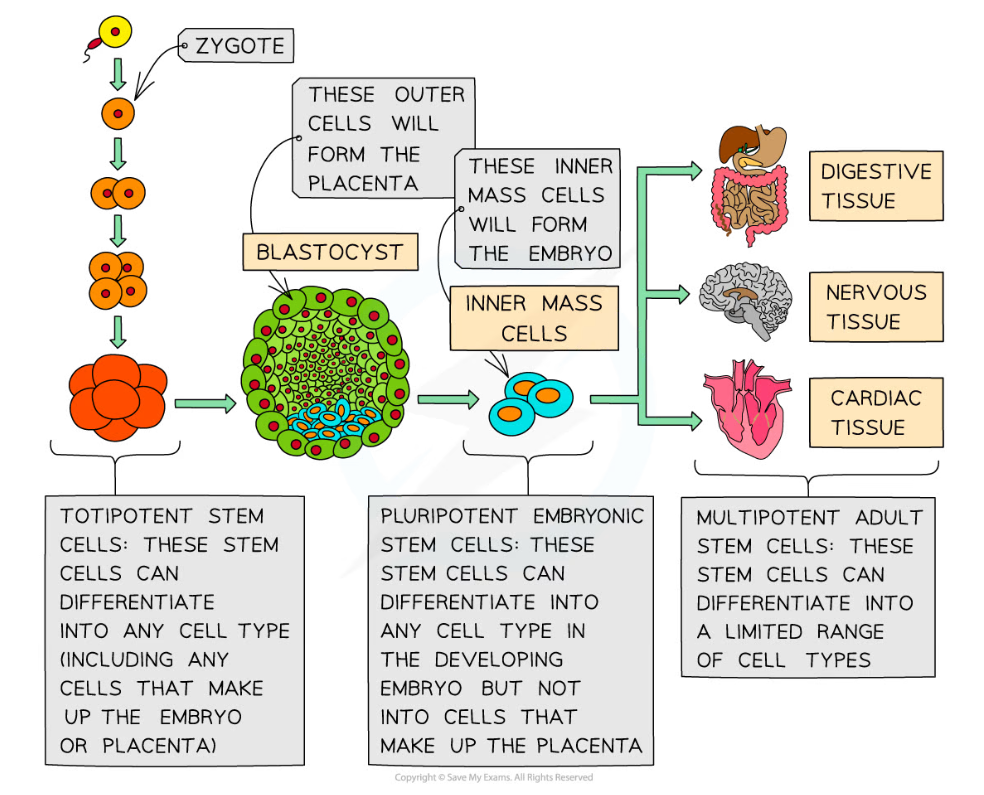- 翰林提供学术活动、国际课程、科研项目一站式留学背景提升服务!
- 400 888 0080
Edexcel A (SNAB) A Level Biology:复习笔记3.4.1 Stem Cells
Stem Cells
- A stem cell is a cell that can divide (by mitosis) an unlimited number of times
- Each new cell (produced when a stem cell divides) has the potential to remain a stem cell or to develop into a specialised cell such as a blood cell or a muscle cell (by a process known as differentiation)
- This ability of stem cells to differentiate into more specialised cell types is known as potency
- There are two main types of potency:
- Totipotency – totipotent stem cells are stem cells that can differentiate into any cell type found in an embryo, as well as extra-embryonic cells (the cells that make up the placenta and umbilical cord). The zygote formed when a sperm cell fertilises an egg cell is totipotent, as are the embryonic cells up to the 16-cell stage of human embryo development
- Pluripotency – pluripotent stem cells are embryonic stem cells that can differentiate into any cell type found in an embryo but are not able to differentiate into cells forming the placenta and umbilical cord
- Stem cells are also found in some adult tissues but they are much less potent than embryonic stem cells (i.e. they can only specialise into certain types of cells)
- For example, intestinal stem cells specialise into intestinal epithelial cells to replace those that are constantly being lost
- This form of potency is known as multipotency – multipotent stem cells are adult stem cells that have lost some of the potency associated with embryonic stem cells and are no longer pluripotent
- Plants also contain stem cell in areas of growth, such as their shoots and roots

Stem cells can be totipotent, pluripotent or multipotent
转载自savemyexams


最新发布
© 2025. All Rights Reserved. 沪ICP备2023009024号-1








